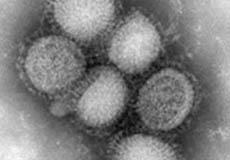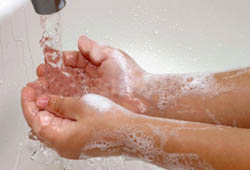Swine flu alert reaches phase 5
According to a Statement by WHO Director-General, Dr Margaret Chan on the 29th of April 2009, the swine flu is now rated as a phase 5, which means that the virus has spread into at least two countries and is causing even bigger outbreaks.The virus "must be taken seriously because of its ability to spread to every country in the world," WHO Director-General Dr.Margaret Chan said at a news conference in Geneva.(1) Therefore it is important for all to understand what this virus is and how to prevent or decrease chances of it spreading.
What is Swine flu?
According to the Center for Disease Control and Prevention, the Swine influenza or H1N1, is a type A influenza that frequently breaks out among swine.(2) Similar to the strains of flu that infect humans, it primarily breaks out during late fall and winter. Just as with other viruses, it frequently changes, or mutates in order to survive a variety of conditions and hosts. Additionally, swine can be carriers of both human and avian flues. When this happens the genes of the swine flu change, and a new virus which is a mix of the previous types emerges.
How is it spread?
Swine influenza spreads from swine to swine and sometimes also to those who handle them or work in pig farms, or come into close contact with them. This is not a common occurrence, but under certain conditions may occur. As with many other respiratory infections, the swine flu is transmitted through airborne droplets when someone coughs or sneezes, and sometimes people may become infected by touching something with flu viruses on it and then touching their mouth or nose. This is particularly important for young children who tend to rub their eyes and noses frequently.
What can people do to reduce chances of contracting the swine flu?
One of the simplest, least expensive methods of controlling the spread of swine flu, as well as many other illnesses, is to wash hands with soap and water for a minimum of 20 seconds. Some scientists estimate that up to 80 percent of all infections are transmitted by hands. The simple process of rubbing the hands thoroughly with soap under water reduces the chances of spreading disease. 
According to the Mayo Clinic, regular soap is just as effective as antibacterial soaps, and actually, “using antibacterial soaps may lead to the development of bacteria that are resistant to the products' antimicrobial agents — making it even harder to kill these germs in the future."(3)
If water is not available then it is suggested to use a hand sanitizer as this also reduces the transmission of many types of viruses and bacteria.It is also important to clean surfaces that are frequently touched such as door knobs, telephones and especially keyboards. According to a study done by the London consumer group WHICH? (4), one of the keyboards tested had 150 times the recommended limit for bacteria - five times as filthy as a lavatory seat tested at the same time.Additionally, the topic of handling money and then foods, without washing hands is imperative. According to a study published in Applied and Environmental Microbiology, viruses, especially influenza, can remain viable for at least 48 hours, and if mucosal fluids are involved, the viability can increase to 72 hours. The study also showed that infectious viruses can survive for several days on banknotes (paper money).(5)
What kills influenza virus?
Influenza virus is destroyed by heat (167-212°F [75-100°C]). In addition, several chemical germicides, including chlorine, hydrogen peroxide, detergents (soap), iodophors (iodine-based antiseptics), and alcohols are effective against human influenza viruses if used in proper concentration for a sufficient length of time. For example, wipes or gels with alcohol in them can be used to clean hands. The gels should be rubbed into hands until they are dry.
It is important with these kinds of illnesses that people be aware of routes of transmission and methods of reducing possibilities of it spreading. By taking necessary precautions, the effects of such viruses and their impact on society can be limited.
Is there a treatment for the H1N1 virus?
It is important to know that viruses cannot be cured by medicines, rather only the symptoms can be controlled and relief measures given. Unlike bacteria, viruses must live out their cycle and the body’s own immune system should be able to fight off most types of viral infections if in good health. Therefore it is important that people maintain good health by getting enough rest, exercise and eat a healthy balanced diet. In the event that someone becomes infected with the swine flu, two medications that the CDC recommends are oseltamivir or zanamivir for the treatment and reduction of flu symptoms. Use of these antiviral medications may reduce the possibility of complications due to the influenza.